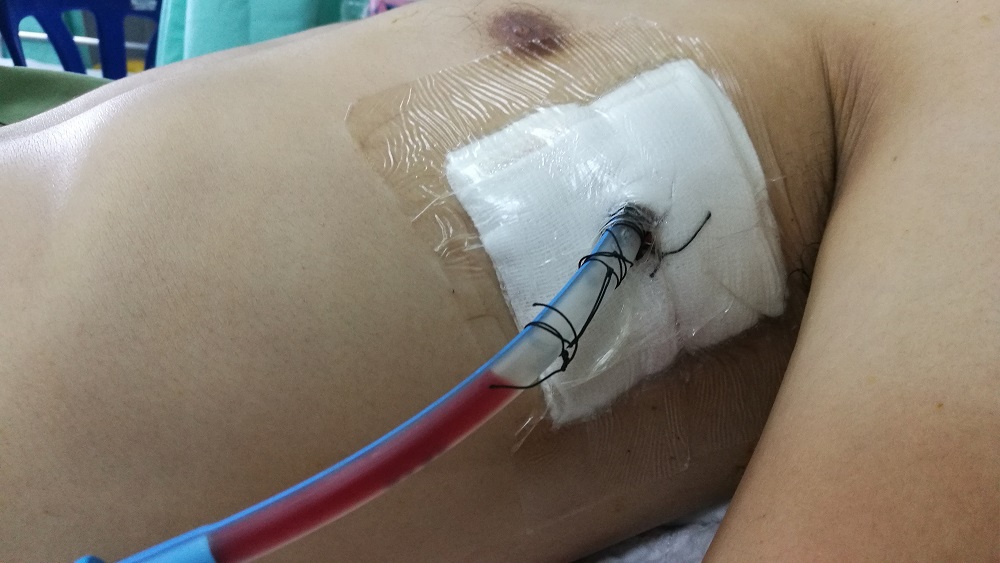Home Care How To Care For A Urinary Indwelling Catheter
Table of Content
Drink plenty of fluids and if you are able, take plenty of exercise. Speak to your nurse or doctor if you are prone to constipation for necessary advice. • The skin around the catheter should be washed daily with unscented soap and water, rinsed and dried thoroughly with a clean wash cloth.
Using long-term urinary catheters increases risks of UTIs as well as other possible complications. In order to avoid these, caregivers need to perform daily catheter care strictly as instructed and with caution. An essential part of the routine is practicing good hygiene. Below are important nursing care tips when performing urinary catheter care at home. There are some people who will get an infection from a catheter. There are many reasons why this could happen.
Caregiver Stress & Burnout: The Importance of Self-Care & Getting Help
Remove the stopper on the leg bag or open the clamp on the large bag and empty the urine into the provided container to measure the urine. If you’re washing your hands with soap and water, wet your hands, apply soap, rub them together well for at least 20 seconds, then rinse. Dry your hands with a paper towel and use that same towel to turn off the faucet. Make sure you always shower with your night bag.

Medical attention should be sought immediately. Below is a general description of the catheterisation process. Diabetes called diabetic peripheral neuropathy. Some medications can also cause the side effects of urinary retention. Make sure that the bag is below the level of the bladder/pelvis.
Search
She gave our helper some caregiver training and also share some tips on how to make my dad feels more comfortable. As advised by a doctor, a urinary catheter is usually used when people naturally have difficulty peeing . Generally, there is a difference between male catheters & female catheters in sizes while there is also "unisex” catheters. Read more about the risks of urinary catheterisation.

Leave your name and phone number with the area code. The catheter does not drain urine and you have tried one of the options above to fix it. Make sure the leg strap or Statlock™ is not blocking drainage into the bag. If you are asked to record the amount of urine, drain the urine into the container you were given for this purpose. Record the amount of urine and discard it into the toilet.
Caregiver’s Guide: Caring for Patients with Urinary Catheter
That helps prevent irritation to your urethra. Gently wash the area around the catheter with soap and water. Be sure to wash the catheter as well as your penis and scrotum. Be careful not to pull on the catheter tubing. Clean the tip of the catheter and connector with separate alcohol pads.
You will need to empty the leg bag every two to three hours; the larger bag only needs to be emptied every eight hours. Keep your drainage bag off the floor at all times. Keep the drainage bag below the level of your bladder. The tubing from your leg bag should fit down to your calf with your leg slightly bent. If you have extra tubing, you may need to cut it.
You'll be given a supply of catheter equipment when you leave hospital and be told where you can get more supplies. Catheter equipment is generally available on prescription from pharmacies. Patients are in need of right doctors like you. Join Ninkatec Partner Network to reach new patients and grow your practice. Allergic reactions to latex may cause rash and swelling.
Empty your bags at least every 8 hours or more often as needed to prevent urine back up. Clean the end of the catheter and the end of the drainage tube with a cotton ball soaked in 70 percent rubbing alcohol. The system’s main purpose is to remove urinary waste products from the body.
Your care team cannot see anything you write on this feedback form. Please do not use it to ask about your care. If you have questions about your care, contact your healthcare provider. In the morning after you shower, change the night bag to the leg bag. This video demonstrates how to change your urinary catheter drainage bag.

This information will help you care for your urinary catheter while you’re at home. Memorial Sloan Kettering was founded in 1884, and today is a world leader in patient care, research, and educational programs. With cancer, where you get treated first matters. From diagnosis to treatment, our experts provide the care and support you need, when you need it. Our experienced and friendly team are passionate about our care at home services.
Below is a quick summary of situations when immediate medical help is recommended. Keep these handy if you are caring for a loved one with a urinary catheter, so problems can be tended to and addressed quickly. Attach the other end of the catheter tube to a drainage bag. In some instances, urinary catheters are used when conducting diagnostic tests. Make sure that the catheter is attached/secured to your leg. This will prevent pulling on the catheter.

The other end of the catheter is connected to an external collection device . Drain the mixture out and rinse the drainage bag with clean water. Do not use a bleach solution during this process, as it can damage the bag and tubing. Pour the vinegar-water mixture into the drainage bag through the drain tube and swish it around in the bag. Set the bag in a bathtub or sink to allow the mixture to soak for 30 minutes.
Patient Appointments
A urinary catheter is a hollow, partially flexible tube that collects urine from the bladder and leads to a drainage bag. It is procedure that should only be done by nurses who has had training. Sometimes catheters can cause the patient to be in discomfort.

Gently tap the connection to drain any urine left in the tube in down into the leg bag. Clean the connection between the catheter and the drainage bag with an alcohol swab. This booklet will help you in caring for an urinary indwelling catheter at home. Please ask any other questions that you may have. Use a hypoallergenic tape to secure the urinary bag on either side of your bed. When the bag is empty, close the clamp on the drain tube.

Comments
Post a Comment